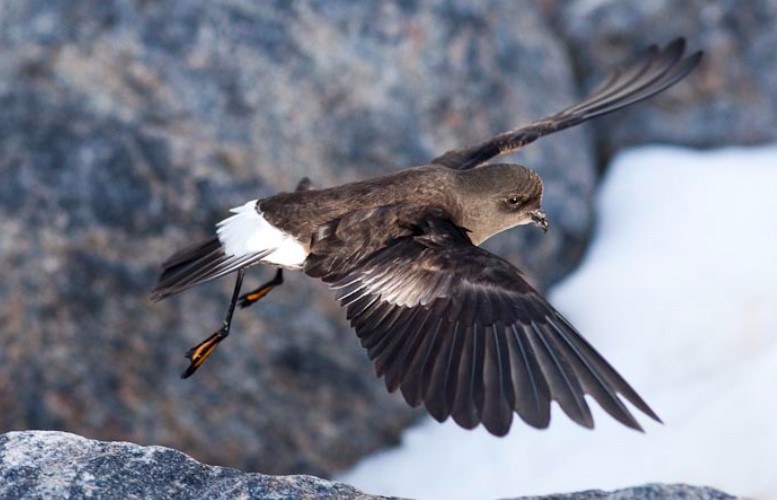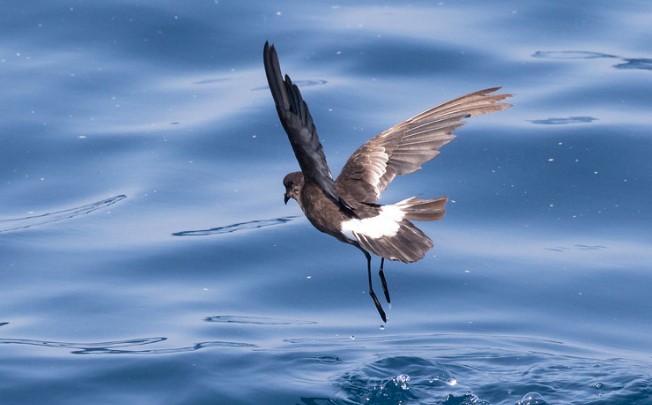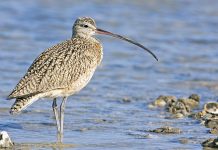Wilson’s Storm-Petrel (Oceanites oceanicus) is a remarkable wanderer this dainty tiny petrel with its dark plumage, square-tipped tail, and white rump band migrates from its breeding grounds in the Antarctic and subantarctic to winter in the northern Indian Ocean, western Pacific Ocean, and North Atlantic. It is seen more often on Australia’s continental shelf than any other storm petrel, despite not breeding there. Wilson’s Storm-Petrel is 180 mm long, with a square tail. This is also known as the Flat-clawed Storm Petrel.
Wilson’s Storm-Petrel is occasionally seen in Australia’s coastal waters in winter. It breeds on several Antarctic and subantarctic islands as well as along Antarctica’s coastline. April-June is the time of the year when the bird moves northward from these breeding colonies to the inshore waters of the North Atlantic, northern Indian, and Western Pacific oceans. There are two races; one large, and one small, reaching Australia.
Read More! Blue-Footed Booby – Pride Due to Marvelous Feet

Flying like a butterfly over rough seas, it skips and flutters erratically then glides on. It darts and hovers while feeding, holding its wings aloft and dangling its feet in the water. Most of its food comes from the surface, but occasionally it plunges for it, such as crustaceans, krill, and oil. Often, it investigates oily bait that fishing boats throw overboard. At sea, it is gregarious. Wilson’s Storm-Petrels breed in colonies in November, courting in high-speed aerial chases and duetting on the ground while preening and vibrating their bills.
Sound is used to locate nests and mates, and nest occupants often attract multiple potential mates by calling. The most aggressive of these wins out with a series of threat-hops, but the nest occupant may not accept it; if so, it is quickly driven off with high-pitched squeaks and a jet of disgorged orange stomach oil. Nesting and breeding occur in loose colonies in summer, mainly in November-May. The nest is in a small burrow or among rocks.

From early December to late January, egg-laying is not synchronized among colonies. Young hatch from mid-January to late March and brood in their first one-two days and feed irregularly at night after that, fledge from mid-March. Usually, one white egg is spotted lightly with red-brown, especially at the blunt end; it is oval, about 34 x 24 mm. Incubation: 39-48 days, by both sexes in 48-hour shifts. Young, fed by both parents, fledge in about 60 days.
Both sexes are similar. Entirely sooty black except for the white rump and pale diagonal bar across the upper wing coverts. Their eyes are brown. The bill is black. Feet and toes are black with yellow webs. Immature birds are like adults. However, the downy young are dark grey; pink feet. The call at the nest is a soft, nasal several-syllable aark-aark greeting, often repeated in long sequences. Moreover quite chattering in courtship. At sea a faint rapid squeak when feeding.
Read More: Tahiti Petrel (Pseudobulweria rostrata)







